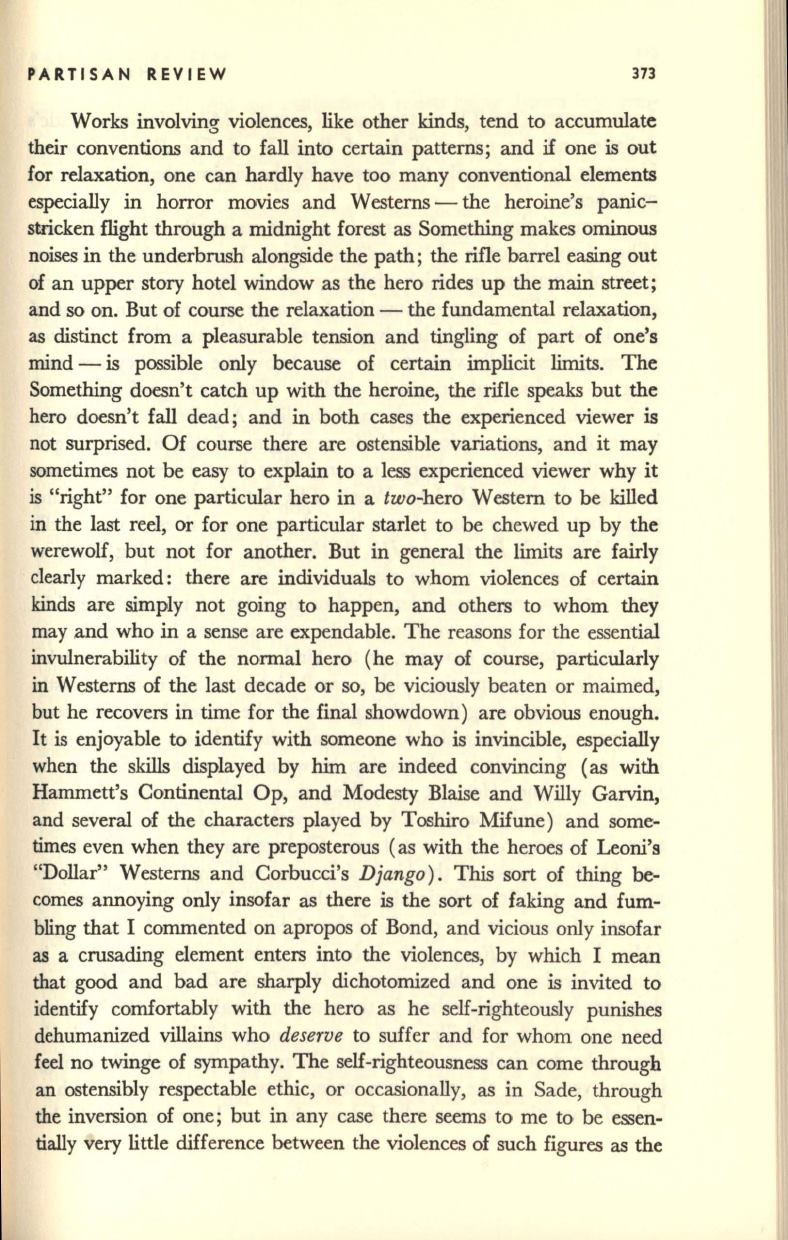
PARTISAN REVIEW
373
Works involving violences, like other kinds, tend to accumulate
their conventions and to fall into certain patterns; and if one is out
for relaxation, one can hardly have too many conventional elements
especially in horror movies and Westerns - the heroine's panic–
stricken flight through a midnight forest as Something makes ominous
noises in the underbrush alongside the path; the rifle barrel easing out
of an upper story hotel window .as the hero rides up the main street;
and so on. But of course the relaxation - the fundamental relaxation,
as distinct from a pleasurable tension and tingling of part of one's
mind - is possible only because of certain implicit limits. The
Something doesn't catch up with the heroine, the rifle speaks but the
hero doesn't fall dead; and in both cases the experienced viewer
is
not surprised. Of course there are ostensible variations, and
it
may
sometimes not be easy to explain to a less experienced viewer why it
is "right" for one particular hero in a
two~hero
Western to be killed
in the last reel, or for one particular starlet to be chewed up by the
werewolf, but not for another. But in general the limits are fairly
clearly marked: there are individuals to whom violences of certain
kinds are simply not going to happen, and others to whom they
may and who in a sense are expendable. The reasons for the essential
invulnerability of the normal hero (he may of course, particularly
in
Westerns of the last decade or so, be viciously beaten or maimed,
but he recovers in time for the final showdown) are obvious enough.
It is enjoyable to identify with someone who is invincible, especially
when the skills displayed by
him
are indeed convincing (as with
Hammett's Continental Op, and Modesty Blaise and Willy Garvin,
and several of the characters played by Toshiro Mifune) and some–
times even when they are preposterous (as with the heroes of Leoni's
"Dollar" Westerns and Corbucci's
Django).
This sort of thing be–
comes annoying only insofar as there
is
the sort of faking and fum–
bling that I commented on apropos of Bond, and vicious only insofar
as a crusading element enters into the violences, by which I mean
that good and bad are sharply dichotomized and one is invited to
identify comfortably with the hero as he self-righteously punishes
dehumanized villains who
deserve
to suffer and for whom one need
feel no twinge of sympathy. The self-righteousness can come through
an ostensibly respectable ethic, or occasionally, as in Sade, through
the inversion of one; but in any case there seems to me to be essen–
tially very little difference between the violences of such figures as the


